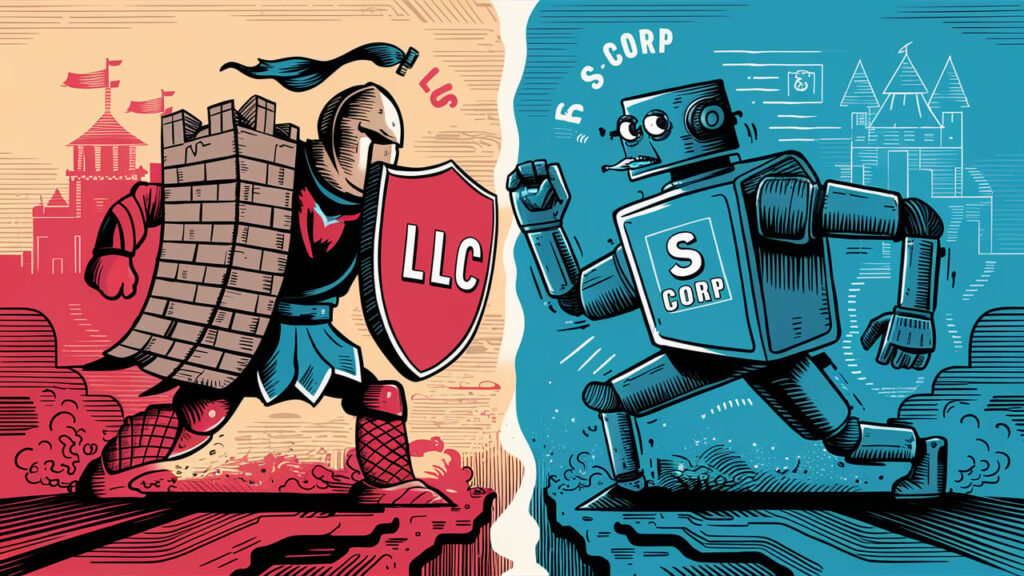Navigating the world of work can be tricky, especially when it comes to understanding your role. Are you an independent contractor or an employee?
This question isn’t just about job titles—it’s about your rights, responsibilities, and the way you’re treated legally. If you’ve ever wondered about the differences, you’re in the right place. This article will break down the legal distinctions between the two roles in simple terms, helping you see which category you fall into.
Understanding these differences could change how you work, how you’re paid, and even how you plan for your future. Dive in to ensure you’re on the right track and making the best decisions for your career.
What Is an Independent Contractor?
An independent contractor is a self-employed individual or entity hired to perform specific tasks or services for a business, typically under a contract. They operate with autonomy, control their work methods, and are responsible for their own taxes and benefits. Examples include freelancers, consultants, or gig workers like Uber drivers.
Key Characteristics:
- Control: Independent contractors decide how, when, and where to complete their work.
- Payment: Paid per project, task, or contract, often via invoices, without payroll deductions.
- Taxes: Responsible for self-employment taxes, including Social Security and Medicare (IRS, 2025).
- Benefits: Not entitled to employer-provided benefits like health insurance, paid leave, or retirement plans.
- Tools/Equipment: Typically provide their own tools, equipment, or workspace.
What Is an Employee?
An employee is an individual hired by a business to perform work under its direction and control, typically as part of ongoing operations. Employees are subject to employer oversight and receive wages, benefits, and tax withholdings.
Key Characteristics:
- Control: Employers dictate work schedules, methods, and tasks.
- Payment: Paid regular wages (hourly, salaried) with federal and state taxes withheld.
- Taxes: Employers withhold income taxes and contribute to Social Security, Medicare, and unemployment insurance.
- Benefits: Eligible for benefits like health insurance, paid time off, and workers’ compensation, depending on company policy.
- Tools/Equipment: Employers typically provide necessary tools, equipment, or workspace.
Classification Criteria
Understanding classification criteria is crucial for distinguishing between an independent contractor and an employee. Key factors include control over work methods, financial independence, and relationship terms. These legal distinctions impact tax obligations and benefits.
Understanding the classification criteria for independent contractors versus employees is crucial for both businesses and workers. Misclassification can lead to hefty legal penalties and tax issues. Knowing the right category ensures fair treatment and compliance with labor laws.
Control And Independence
The level of control a company has over a worker is a significant factor in classification. Employees often receive detailed instructions about when, where, and how to work. Independent contractors, on the other hand, have the freedom to decide how to complete their tasks.
Consider your last freelance project. Did you choose your work hours and methods? If yes, you likely operated as an independent contractor. Companies can’t dictate the specifics of how you perform your job as a contractor, maintaining your independence.
Financial Arrangements
The financial relationship between a company and a worker helps determine the classification. Employees usually receive a steady paycheck and benefits like health insurance. Independent contractors, however, typically invoice for their services and lack employee benefits.
Imagine receiving a fixed salary every month versus billing for each project. Which scenario sounds more like your situation? Financial arrangements can significantly influence your classification, impacting your tax obligations and benefits.
Relationship Nature
The nature of the relationship between the worker and the company also plays a crucial role. Employees often have ongoing, long-term relationships with their employers. In contrast, independent contractors are engaged for specific projects or timeframes.
Reflect on your current work relationship. Is it an ongoing commitment, or is it based on project completion? This aspect not only affects your classification but also your job security and future opportunities.
Do you find yourself wondering about your own work situation now? Understanding these criteria can clarify your role and rights. Are you confident in your classification status, or do you need to reevaluate?

Legal Implications
Legal distinctions between independent contractors and employees can affect tax obligations and worker rights. Employers must understand these differences to avoid penalties and ensure compliance with labor laws. Clear contracts and proper classification are crucial for protecting both parties in business relationships.
Understanding the legal implications between being an independent contractor and an employee is crucial. These differences affect your taxes, benefits, and liabilities. Knowing where you stand can help you make informed decisions, whether you’re hiring or being hired. Let’s break down these legal aspects.
Tax Responsibilities
As an independent contractor, you’re responsible for handling your own taxes. This means paying self-employment taxes, which cover Social Security and Medicare. You must also keep track of your business expenses to maximize deductions.
Conversely, employees have taxes withheld from their paychecks by their employer. The employer handles Social Security, Medicare, and unemployment taxes. This often makes tax season easier for employees but requires vigilance to ensure withholdings are correct.
Have you considered the impact of these tax responsibilities on your financial planning? If you’re juggling multiple gigs as a contractor, this becomes even more critical.
Employment Benefits
Independent contractors typically do not receive traditional employment benefits. Health insurance, retirement plans, and paid leave are usually not on the table. You need to plan and budget for these independently.
Employees often have access to a range of benefits provided by their employer. This can include health insurance, 401(k) plans, and paid time off. These benefits can significantly affect your overall compensation package.
Would you trade flexibility for benefits? It’s a question of personal priorities and financial stability.
Liability And Risk
Contractors bear more liability and risk. You’re responsible for your work quality and safety. This can mean higher insurance costs and more significant financial risk if things go wrong.
Employees generally have more protection in this area. Employers are liable for their employees’ work-related actions and typically cover any necessary insurance. This protection can be a significant factor in choosing employment over contracting.
Think about your tolerance for risk. Are you prepared to handle the potential downsides of being a contractor?
Navigating these legal implications can be challenging but understanding them empowers you to make better career choices. Whether you value flexibility or stability, knowing the legal differences helps you align your professional path with your personal goals.
Rights And Protections
Understanding rights and protections is essential when distinguishing independent contractors from employees. Employees enjoy benefits like overtime pay and health insurance. Independent contractors usually have more freedom but less security.
Understanding the rights and protections for independent contractors versus employees is crucial, especially if you’re navigating the complexities of employment classifications. Whether you’re hiring or seeking work, knowing these distinctions can impact your job security, benefits, and legal standing. Let’s break down the essential aspects of labor laws, discrimination policies, and termination procedures.
Labor Laws
Labor laws are the backbone of employee rights. They provide protections like minimum wage, overtime pay, and safe working conditions. Employees benefit from these laws, ensuring their basic rights are upheld.
Independent contractors, however, operate outside these laws. They negotiate their terms, giving them flexibility but also leaving them unprotected from some basic employment rights.
Consider this: if you’re an independent contractor, are you prepared to manage these aspects on your own?
Discrimination Policies
Discrimination policies are designed to protect employees from unfair treatment based on race, gender, age, and other factors. These policies are mandatory for employers to enforce, creating a safer work environment.
Independent contractors lack these protections. They must rely on their contracts and personal negotiations to safeguard against discrimination.
Imagine facing discrimination without the legal backing of these policies—how would you handle it?
Termination Procedures
Termination procedures offer a structured process for ending employment. Employees typically receive notice, severance, and sometimes even support in finding new work.
Independent contractors face a different reality. Contracts can be terminated with little notice, leaving them vulnerable to sudden income loss.
Think about your financial stability; do you have a plan if your contract ends abruptly?
Navigating the rights and protections as either an independent contractor or employee can be challenging. By understanding these differences, you empower yourself to make informed decisions that best suit your career path.
Contractual Obligations
Understanding contractual obligations is crucial for both independent contractors and employees. These obligations define the legal boundaries within which they operate. They impact everything from work expectations to payment methods. Let’s explore the differences through agreement terms, scope of work, and payment structures.
Agreement Terms
Independent contractors usually negotiate their agreement terms. They have the freedom to set conditions that suit their work style. Employees, on the other hand, follow company policies. Their agreements often have less flexibility.
Scope Of Work
For contractors, the scope of work is clearly defined in contracts. It specifies tasks and project limits. Employees have more varied duties. They adapt to changing job requirements. This flexibility is built into their role.
Payment Structures
Contractors often receive payment per project. They might also be paid hourly. Their invoices reflect specific work done. Employees typically earn a fixed salary. They might also receive hourly wages. Payment methods align with regular employment.
Misclassification Consequences
Misclassification of workers can lead to legal troubles. Employers may face fines and penalties for treating employees as contractors. Incorrect classification affects taxes, benefits, and workers’ rights.
Misclassifying an employee as an independent contractor can lead to serious consequences for businesses. Understanding the distinction between these two roles is crucial. If you get it wrong, you might face hefty legal and financial repercussions.
Legal Penalties
Misclassification can bring about significant legal penalties. Companies may face fines and charges from various regulatory bodies. These penalties aren’t just a slap on the wrist; they can cripple a small business.
Think about that time when a small business owner thought they were saving on costs by hiring freelance workers, only to be hit with a lawsuit. The financial strain and legal headaches were enough to shut down operations. Is cutting corners worth risking your business’s future?
Back Pay Claims
Employees misclassified as contractors can claim back pay. This means you could owe them overtime and benefits retrospectively. Imagine having to suddenly pay out thousands in back wages.
A friend of mine once worked for a company that misclassified him. When he realized his rights, he filed a claim and won back pay for two years of overtime. Ensure you’re classifying your workers correctly to avoid such costly surprises.
Tax Audits
Misclassification can trigger tax audits. The IRS takes worker classification seriously, and an audit can be both time-consuming and stressful.
You could find yourself sifting through years of tax documents, trying to justify your employee classifications. The stress alone can take a toll on your peace of mind. Are you prepared for that kind of scrutiny?
In summary, misclassification isn’t just a technicality; it’s a serious issue that demands your attention. Understanding the differences between employees and independent contractors can save you from costly mistakes. Are you confident in your classifications, or is it time for a review?
Determining Status
Understanding whether someone is an independent contractor or employee is crucial. It affects taxes, rights, and responsibilities. Knowing the legal differences helps businesses comply with the law.
Determining whether someone is an independent contractor or an employee isn’t just a matter of semantics—it’s crucial for both legal and financial reasons. Misclassification can lead to penalties, back taxes, and legal battles. Understanding the nuances can save you from hefty fines and provide clarity in your workplace relationships.
Industry Standards
Different industries have different norms when it comes to classifying workers. For example, freelancers are common in creative fields, while tech startups might prefer independent contractors for short-term projects.
When you’re determining status, consider what is typical for your industry. If most companies in your sector hire full-time employees for similar roles, you might be expected to do the same.
Case Studies
Real-life examples can provide valuable insights into classification decisions. Take the case of a popular ride-sharing company that classified its drivers as independent contractors. They faced legal challenges and public scrutiny, questioning their classification practices.
On the other hand, a graphic design firm hired freelancers for individual projects, clearly stating terms in their contracts. They benefited from the flexibility and avoided legal troubles. What can you learn from these scenarios for your business?
Government Guidelines
The government sets specific rules to help you determine a worker’s status. The IRS uses a 20-factor test, focusing on behavioral control, financial control, and the relationship between the parties.
Understanding these guidelines can prevent costly mistakes. Are you aware that an independent contractor usually sets their own hours and uses their tools, while an employee might follow a strict schedule and use company equipment?
These distinctions aren’t just bureaucratic—they directly impact your responsibilities and liabilities. Knowing them can protect you and your business from legal complications.
Practical Implications
For Businesses
-
Employees: Require payroll taxes, benefits, and compliance with labor laws (e.g., minimum wage, overtime). Misclassifying employees as contractors can lead to IRS fines, back taxes, and DOL penalties (e.g., unpaid overtime).
-
Independent Contractors: Lower administrative costs but require clear contracts to avoid misclassification. Businesses must issue 1099-NEC forms for payments over $600 annually.
For Workers
-
Employees: Gain job security, benefits, and labor protections but have less flexibility and autonomy.
-
Independent Contractors: Enjoy flexibility and potential tax deductions (e.g., home office, equipment) but lack benefits and bear tax responsibilities.
How to Avoid Misclassification
-
Use Written Contracts: Clearly define roles, responsibilities, and payment terms for contractors.
-
Apply IRS/DOL Tests: Evaluate control, financial arrangements, and relationship type before classifying workers.
-
Consult Professionals: Work with a tax advisor or employment attorney to ensure compliance with federal and state laws.
-
Review State Laws: States like California use stricter tests (e.g., ABC Test under AB5) to classify workers, emphasizing the worker’s role outside the business’s core operations.

Future Trends
The future of work is changing rapidly. Understanding the distinctions between independent contractors and employees is crucial. As businesses adapt, so must our perspectives on work roles.
Gig Economy Impact
The gig economy is growing fast. More people are choosing flexible work. This trend blurs the line between contractors and employees. Companies hire gig workers for short-term projects. This shift impacts traditional employment models.
Freelancers enjoy freedom but lack job security. Businesses benefit from reduced costs. Balancing these interests is a challenge for lawmakers. The gig economy is reshaping the workforce landscape.
Legislative Changes
Governments respond to the growing gig economy. New laws aim to clarify worker status. Some regions offer more protection for gig workers. Others lean towards business flexibility.
These changes affect taxes, benefits, and rights. Companies must stay informed about regulations. The legal landscape is evolving with the workforce.
Technological Influences
Technology plays a key role in work dynamics. Platforms like Uber and Upwork connect workers and clients. These tools simplify hiring but complicate classifications. Automation impacts job availability and roles.
As technology advances, work definitions may change. Companies and workers must adapt to these innovations. Staying updated is essential in this fast-paced environment.
Key Differences Between Independent Contractor and Employee
The distinction hinges on control, financial arrangements, and relationship type. Below is a comparison based on IRS and Department of Labor guidelines:
|
Factor |
Independent Contractor |
Employee |
|---|---|---|
|
Control |
High autonomy; controls work methods and schedule. |
Employer controls how, when, and where work is done. |
|
Payment Structure |
Paid per project/task; no tax withholding. |
Regular wages with tax withholdings. |
|
Benefits |
No employer-provided benefits. |
Eligible for benefits (e.g., health insurance). |
|
Taxes |
Pays self-employment taxes; files 1099-NEC. |
Employer withholds taxes; receives W-2. |
|
Duration of Work |
Temporary or project-based; contract-specific. |
Ongoing, indefinite employment relationship. |
|
Tools/Equipment |
Provides own tools or workspace. |
Employer provides tools or workspace. |
|
Legal Protections |
Limited protections (e.g., no overtime or minimum wage). |
Covered by labor laws (e.g., FLSA, workers’ comp). |
Frequently Asked Questions
What Are The Main Legal Differences Between An Employee And An Independent Contractor?
Employees receive benefits and have taxes withheld by employers. Independent contractors manage their own taxes and lack benefits. Control over work details is higher for employees, while contractors have more autonomy. Employment laws protect employees, but contractors operate under contract terms.
What Is The Main Issue That Distinguishes An Employee From An Independent Contractor?
The main issue distinguishing an employee from an independent contractor is control. Employers control how employees perform tasks, while independent contractors manage their own work methods. This difference affects taxes, benefits, and legal obligations. Understanding these distinctions helps businesses comply with regulations and optimize workforce management.
What Factor Distinguishes An Employee From An Independent Contractor?
The primary distinction is control. Employers control employees’ work details, while independent contractors decide their own methods and schedule.
What Is The Abc Rule For Independent Contractors?
The ABC rule for independent contractors ensures they are truly independent. A: They are free from control. B: They perform work outside the usual business operations. C: They are engaged in an independently established trade. These criteria help distinguish employees from independent contractors.
Conclusion
Choosing between an independent contractor and an employee is crucial. Each has unique legal implications. Independent contractors offer flexibility. Employees provide stability and benefits. Understand your business needs. Consider tax obligations and legal requirements. Misclassification can lead to penalties. Consult a legal expert if unsure.
Proper classification ensures compliance and avoids issues. Stay informed about labor laws. Make decisions that align with your goals. Protect your business and employees. This understanding helps build a strong workforce.
References:
- Internal Revenue Service. (2025). Independent Contractor Defined. Retrieved from https://www.irs.gov/businesses/small-businesses-self-employed/independent-contractor-defined
- Internal Revenue Service. (2025). Understanding Employee vs. Independent Contractor Status. Retrieved from https://www.irs.gov/businesses/small-businesses-self-employed/independent-contractor-self-employed-or-employee
- U.S. Department of Labor. (2025). Employee vs. Independent Contractor. Retrieved from https://www.dol.gov/agencies/whd/flsa/misclassification
- U.S. Department of Labor. (2025). Fact Sheet #13: Employment Relationship Under the FLSA. Retrieved from https://www.dol.gov/agencies/whd/fact-sheets/13-flsa-employment-relationship
Disclaimer: The content on this page is for general information only and should not be considered legal advice. We work hard to provide accurate and up-to-date details, but we can't guarantee the completeness or accuracy of the information. Laws and rules change often, and interpretations may vary. For specific advice, always consult a qualified legal expert. We are not liable for any actions you take based on this information. If you spot any errors or outdated content, please contact us, and we’ll update it as soon as possible.


